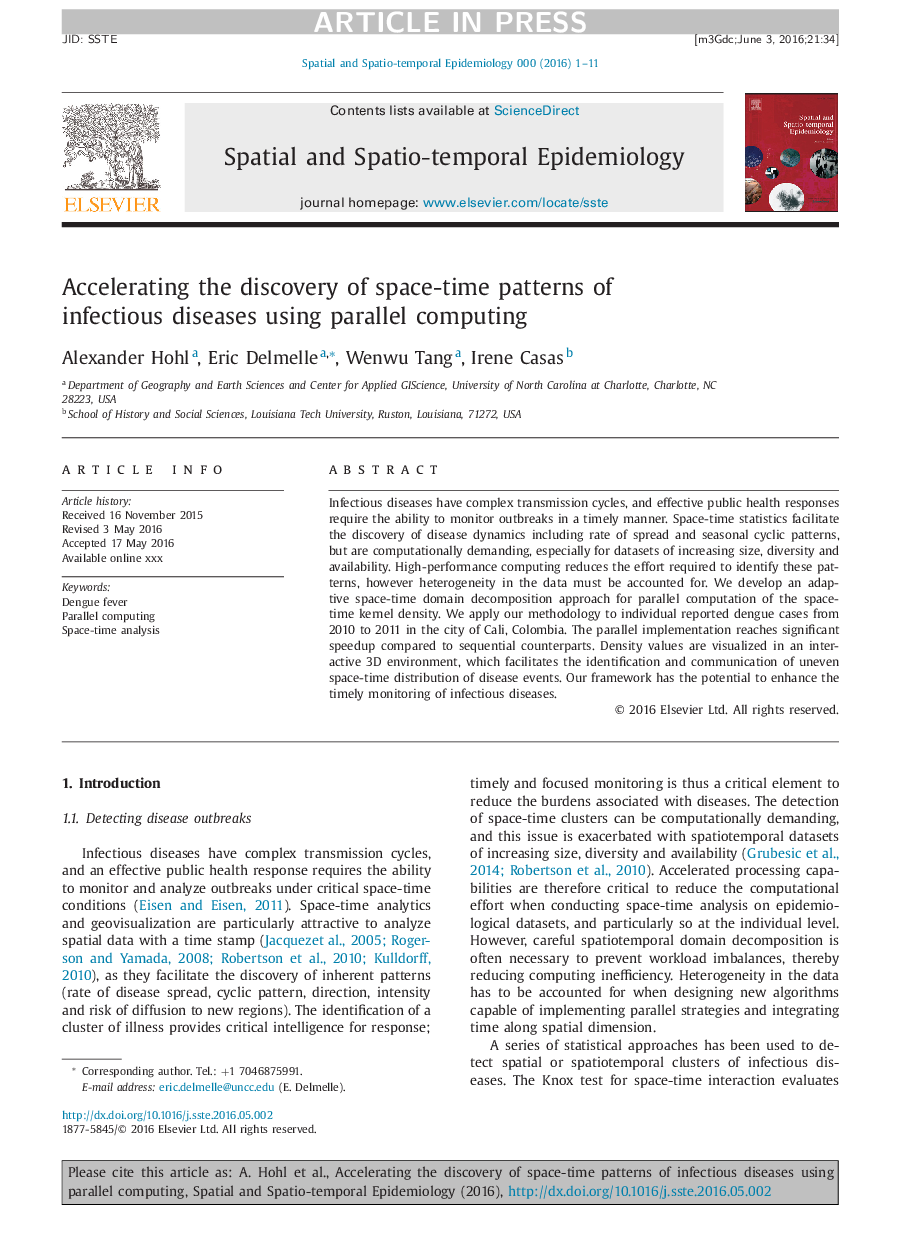| Article ID | Journal | Published Year | Pages | File Type |
|---|---|---|---|---|
| 5118950 | Spatial and Spatio-temporal Epidemiology | 2016 | 11 Pages |
Abstract
Infectious diseases have complex transmission cycles, and effective public health responses require the ability to monitor outbreaks in a timely manner. Space-time statistics facilitate the discovery of disease dynamics including rate of spread and seasonal cyclic patterns, but are computationally demanding, especially for datasets of increasing size, diversity and availability. High-performance computing reduces the effort required to identify these patterns, however heterogeneity in the data must be accounted for. We develop an adaptive space-time domain decomposition approach for parallel computation of the space-time kernel density. We apply our methodology to individual reported dengue cases from 2010 to 2011 in the city of Cali, Colombia. The parallel implementation reaches significant speedup compared to sequential counterparts. Density values are visualized in an interactive 3D environment, which facilitates the identification and communication of uneven space-time distribution of disease events. Our framework has the potential to enhance the timely monitoring of infectious diseases.
Related Topics
Health Sciences
Medicine and Dentistry
Public Health and Health Policy
Authors
Alexander Hohl, Eric Delmelle, Tang Wenwu, Irene Casas,
